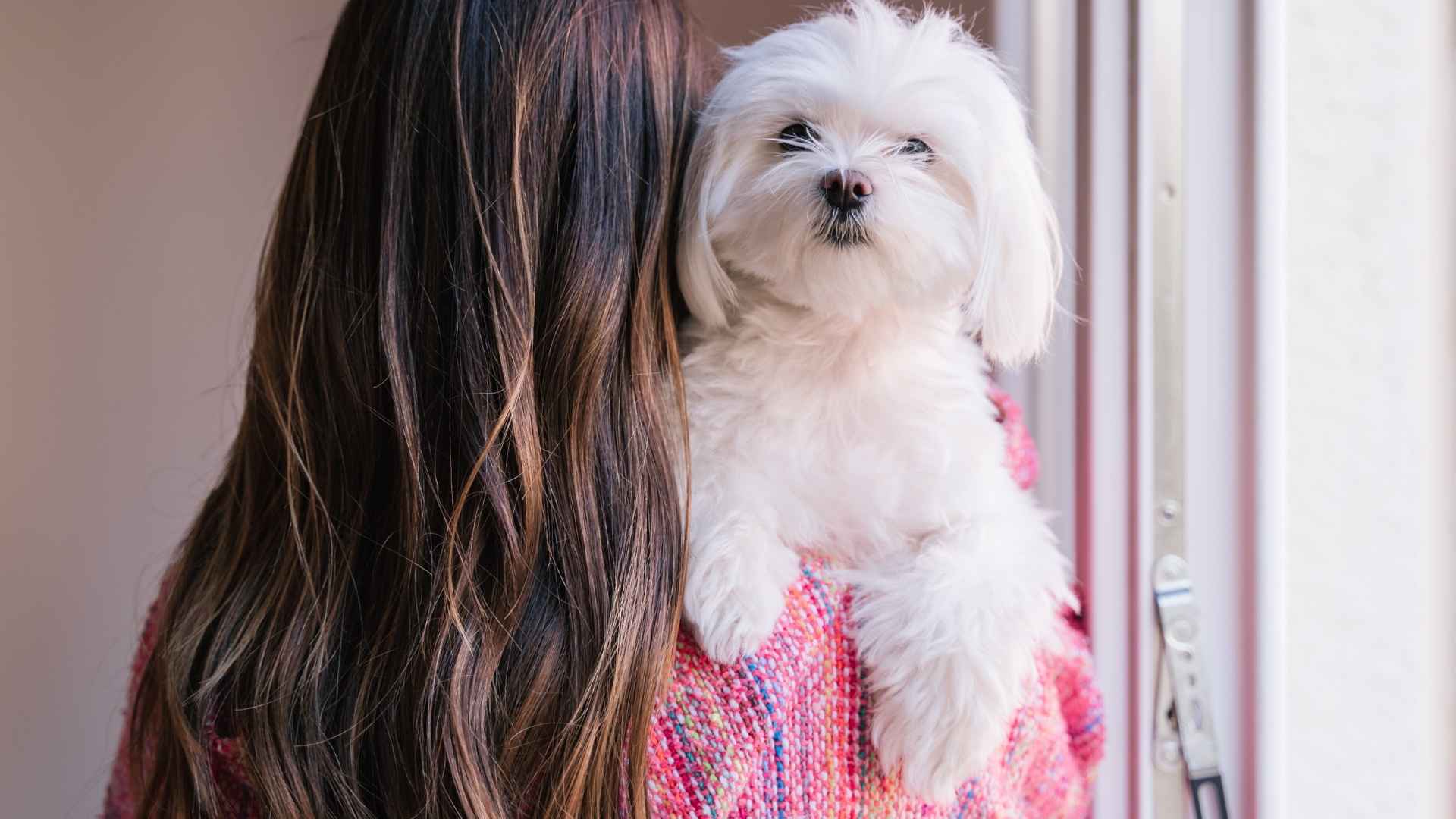An emotional support animal (ESA) offers comfort, companionship, and therapeutic support for those dealing with emotional or mental health issues like anxiety, panic attacks, depression, chronic stress, ADHD, or PTSD.
Not all emotional support dogs need to jog five miles a day or climb mountains with you. Some of the most loving, comforting companions are happy to stay curled up beside you, offering quiet strength and calm presence. If you’re looking for a furry friend that brings peace without the pressure of constant activity, you’re in the right place.
Low-exercise emotional support dogs are ideal for people dealing with anxiety, depression, or simply needing a calming presence in their lives. These emotional support dogs don’t thrive on chaos or intense stimulation—they’re most at home beside you during a quiet movie night or a slow morning coffee. Their job? To love you deeply and sit with you through life’s highs and lows.
We’ll explore the best low-maintenance, emotionally intelligent dog breeds that offer comfort without overwhelming you with high-energy needs. Whether you live in an apartment, have limited mobility, or just prefer a more laid-back lifestyle, these gentle-hearted dogs might just be your perfect match.
Low Exercise Emotional Support Dog Breeds
1. Cavalier King Charles Spaniel
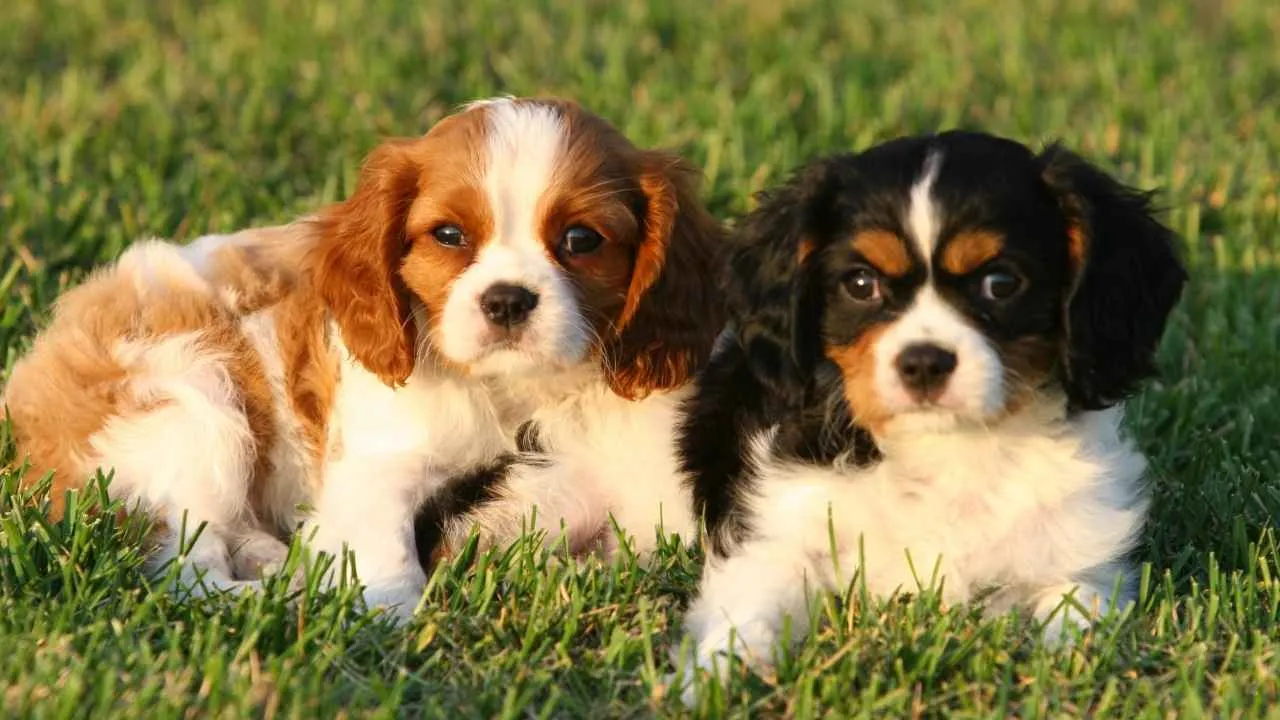
The first best emotional support dog on our list is the Cavalier King Charles Spaniel. They may look like they belong on a royal pillow, but don’t be fooled—they’re much more than a pretty face with silky ears.
Believed to be one of the world’s oldest toy dog breeds, these small dogs come with centuries of lap-warming experience. If you’re a first-time dog parent or someone in need of a calm, loving companion, the Cavalier is your four-legged soulmate.
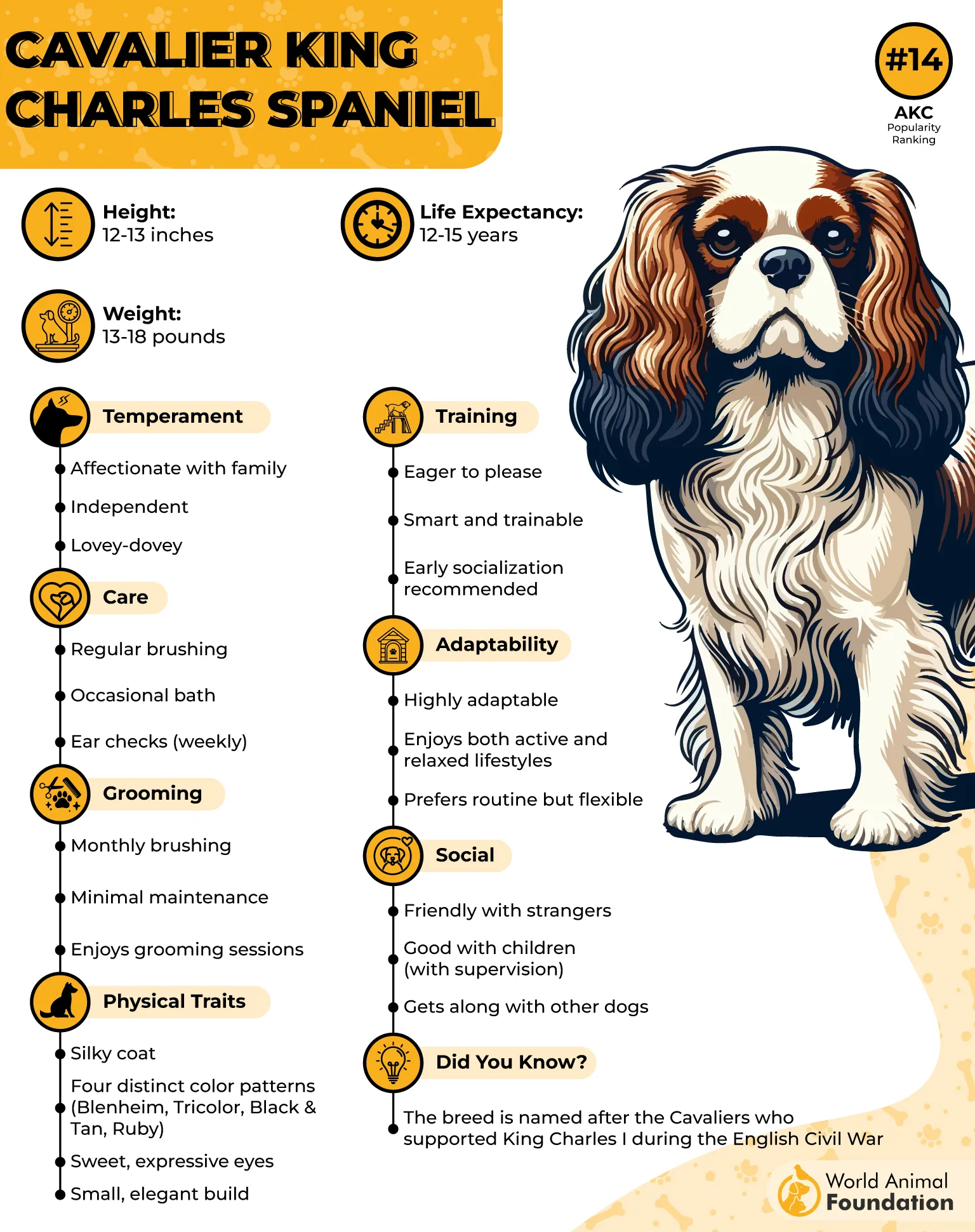
They’re especially great for older individuals or anyone looking for a low-maintenance emotional support animal. Cavaliers are small, easy to handle, and—let’s be real—experts at reading your emotions. Feeling sad? They’ll nuzzle in. Feeling anxious? Instant tail-wag therapy. Feeling dramatic? Don’t worry, they won’t judge.
Personality Snapshot:
Lovey-dovey – Born to snuggle and adore you.
Emotionally tuned in – They feel your feelings.
Low exercise needs – Snoozing > sprinting.
Clingy (in a good way) – They follow you like your shadow.
Everyone’s best friend – Friendly to people, pets, and postal workers.
Now here’s a fun twist: despite their “chill at all costs” vibe, Cavaliers can be surprisingly athletic—kind of like that friend who says “I don’t work out” but casually runs a 5K on weekends. They can hold their own in canine sports with similarly sized breeds.
That said, their brachycephalic (flat-faced) features mean that too much exertion can lead to breathing issues, so gentle walks and play sessions are ideal. No intense workouts—just a little zoomie here and there followed by a nap… or two.
2. Pug

Pugs are tiny, wrinkly bundles of joy that were originally bred to keep Chinese emperors company—and honestly, they haven’t stopped being VIPs since. Later adored by Dutch and British royalty, these little charmers are furry monarchs in compact form.
Pugs are generally small dogs, typically standing about 10 to 13 inches tall and weighing between 15 and 18 pounds. Their coat is usually fawn with a black face and ears, or they can be entirely black.
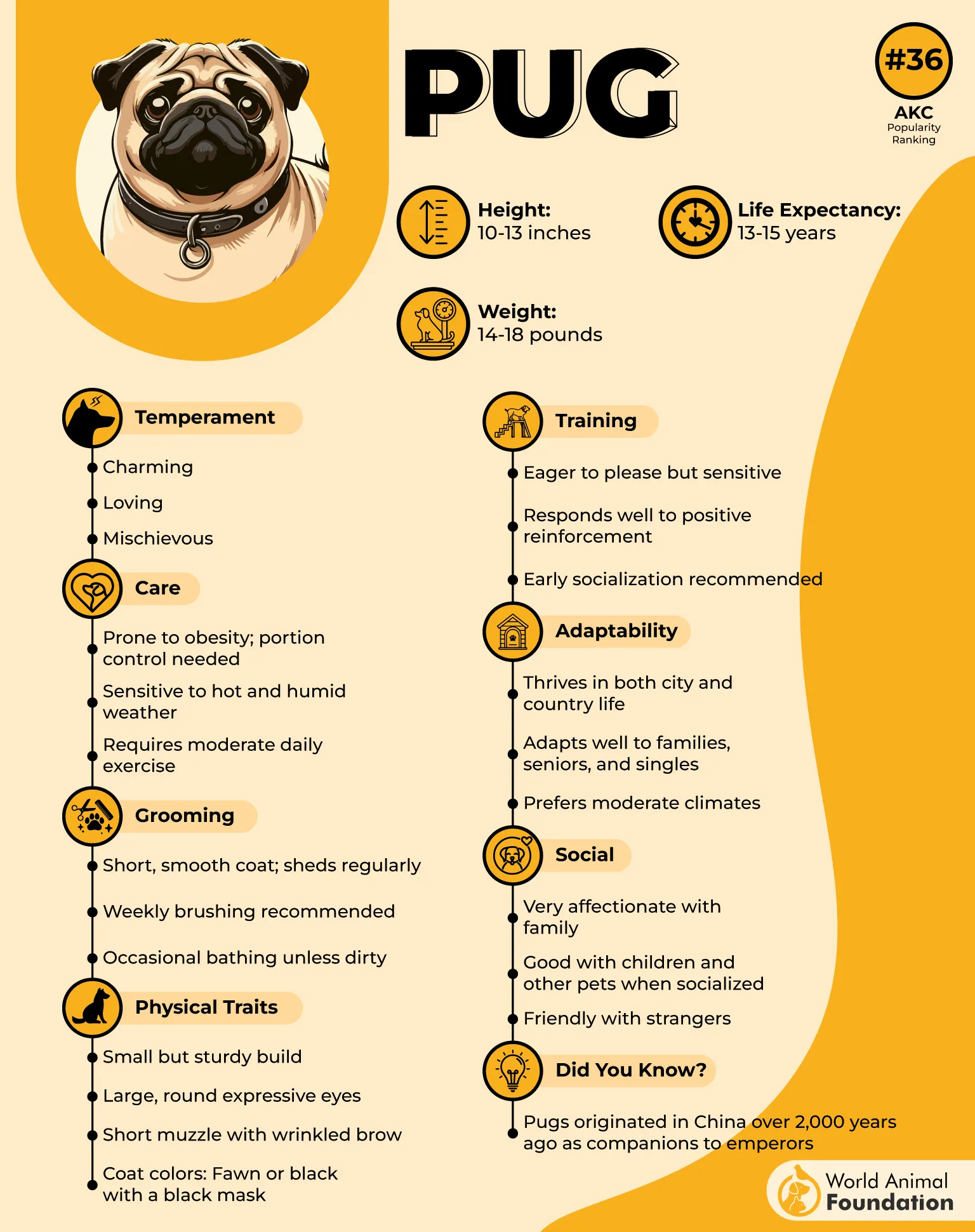
They require moderate exercise (in fact, too much can lead to overheating thanks to their flat faces), so short walks and indoor play are plenty. They’re perfectly happy lounging next to you like a snoring potato with a curly tail.
Personality Snapshot:
Clownish charm – Goofy, playful, and always up for a laugh.
Lap lover – Born to lounge, preferably on you.
Low energy – They’ll take breaks during naps.
Super social – Loves people, other pets, and attention.
Emotionally expressive – Every wrinkle tells a story (usually about snacks).
WebMD highlights that a pug’s personality is just as charming to dog lovers as their distinctive appearance. Originally bred to be companion animals rather than working dogs, pugs naturally crave human attention and affection. Because of their friendly disposition and affectionate nature, pugs are excellent pets for families.
Pugs have short, smooth fur that stays clean without needing much grooming or frequent baths. However, they do shed quite a bit, so brushing them regularly helps remove loose hairs.
3. Shih Tzu
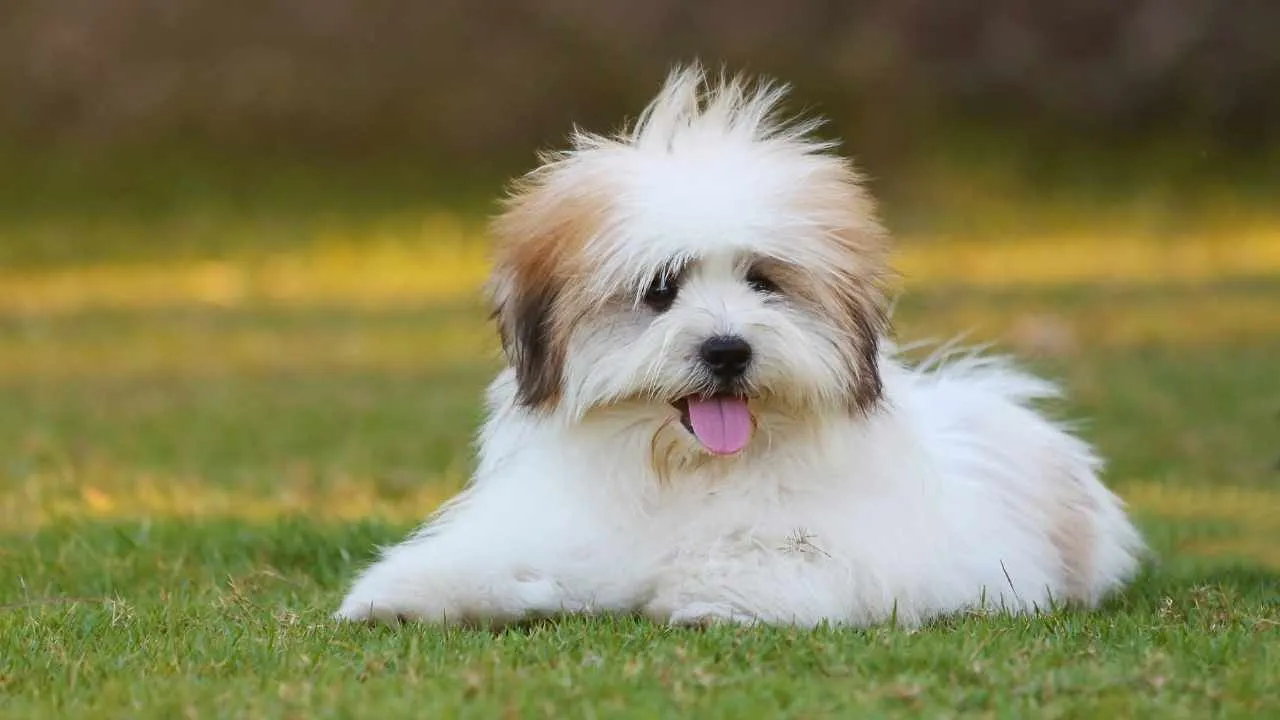
Bred in Tibetan palaces to be pampered lap warmers, the Shih Tzu is a four-legged spa day. These lap dogs were made to chill indoors, making them perfect for low-exercise lifestyles—and high-emotion households.
The Shih Tzu is a small dog known for its unique and charming appearance. They feature long, silky coats, short legs, and large, expressive eyes. Typically, Shih Tzus weigh between 9 and 16 pounds and stand about 8 to 11 inches tall.
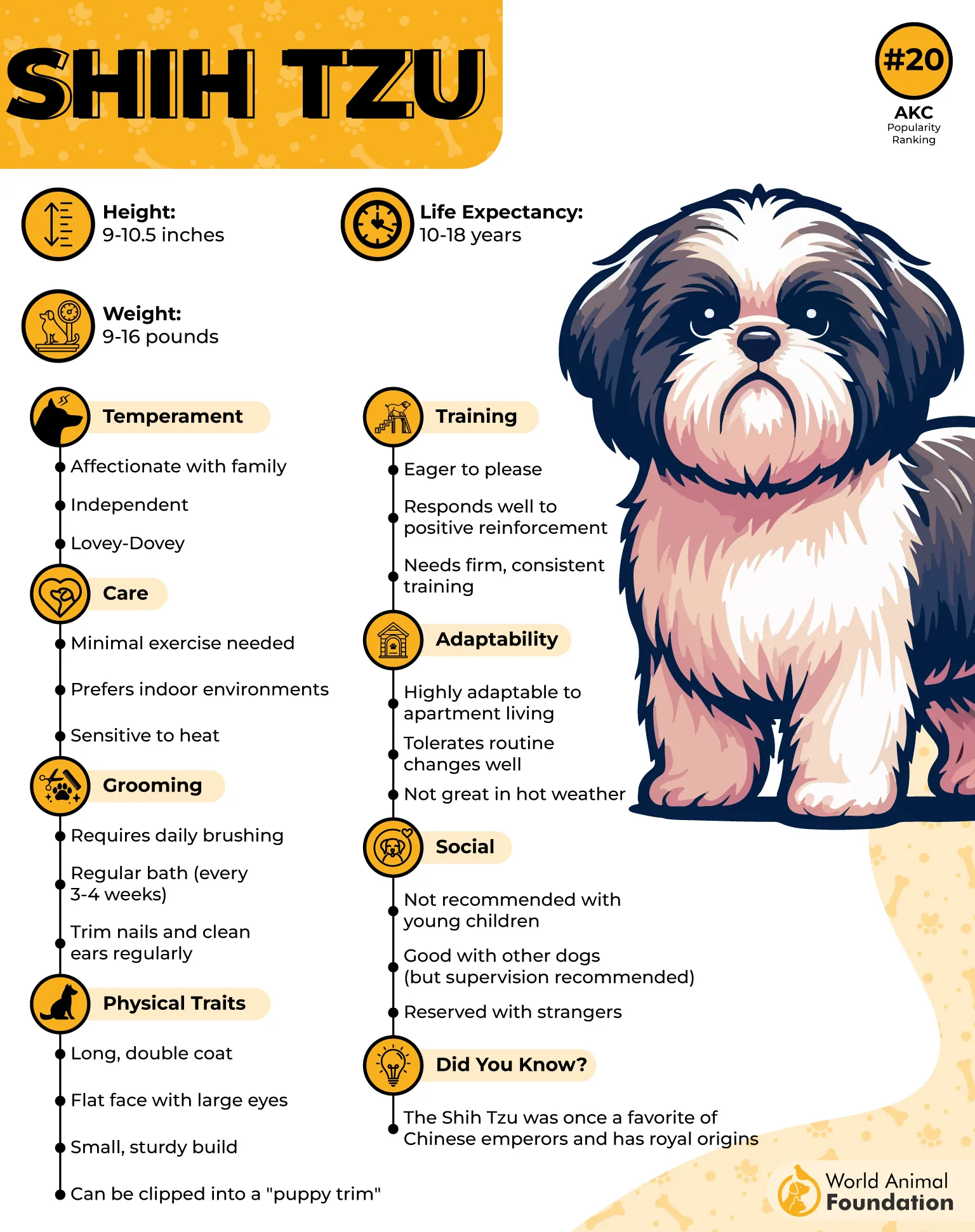
With a playful antic and a calming presence, these tiny dogs are pros at stress relief, movie marathons, and being the fluffy little heartbeat at your feet. Plus, they often live long lives, so you’re in for many years of snuggly support. They are low maintenance breed with a gentle nature who thrive on human companionship.
Personality Snapshot:
Playfully peaceful – Fun when you need it, mellow when you don’t.
Low-energy companion – Exercise? Light. Loyalty? Heavy.
Kid-friendly – Great with children (and grown-ups acting like them).
Cuddly and calm demeanor– Night-in specialist.
Lifelong buddy – They’re in it for the long haul.
Shih Tzus are highly social and adjust easily to both people and other pets in the household. Their affectionate and loyal nature makes them a favorite among dog owners seeking a warm, close companion. They’re often bright, curious, alert, and full of energy.
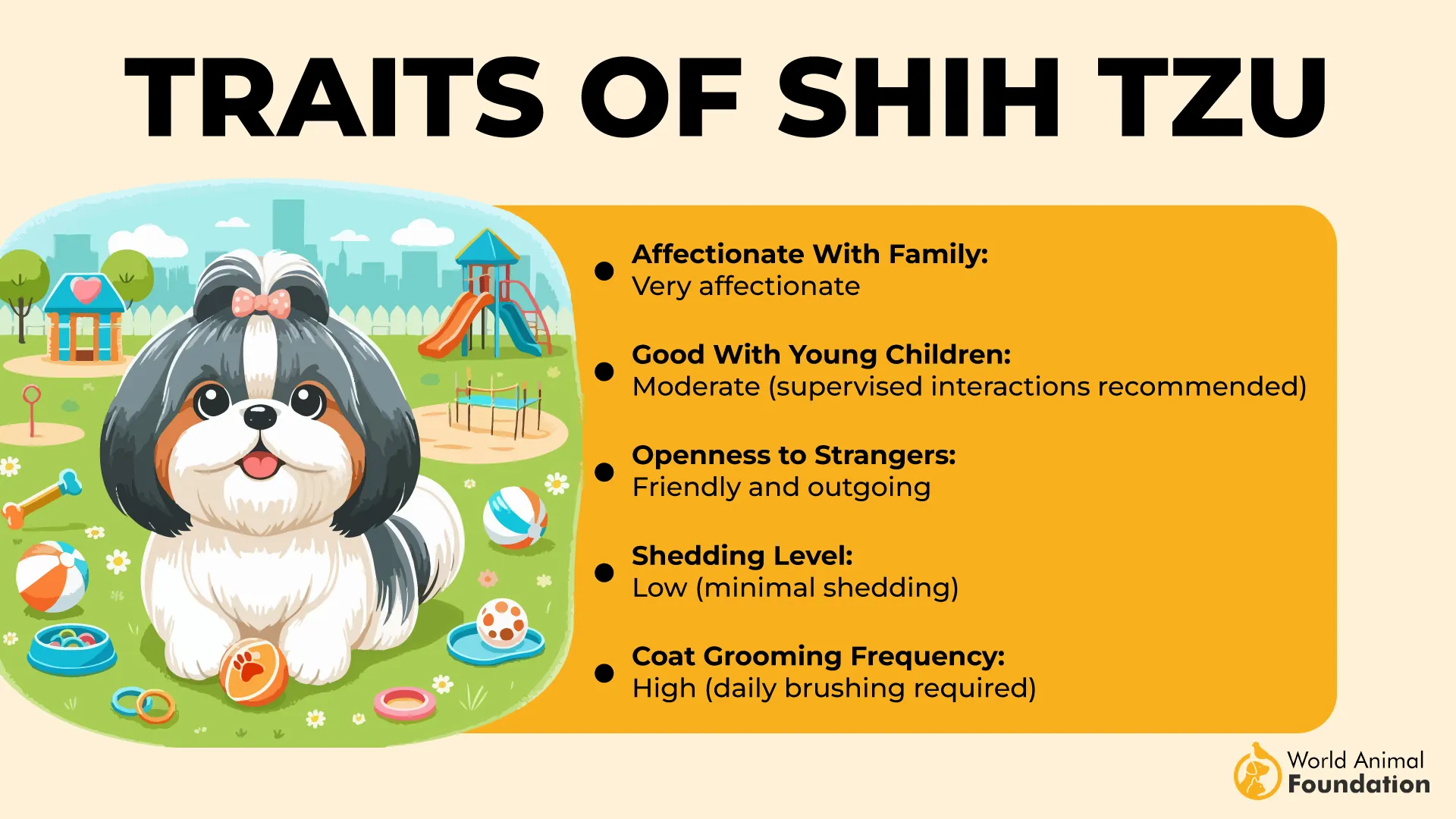
Your Shih Tzu doesn’t require ample exercise, as they were originally bred to be indoor companion dogs. However, they still benefit from light daily activity to stay healthy and happy. A short walk of about 20 to 30 minutes per day, along with some indoor playtime, is usually enough to meet their exercise needs.
These dogs don’t require much room, making them well-suited for homes of any size. However, it’s important to provide them with enough space to play and stay mentally stimulated to keep them happy and healthy.
4. Bichon Frise
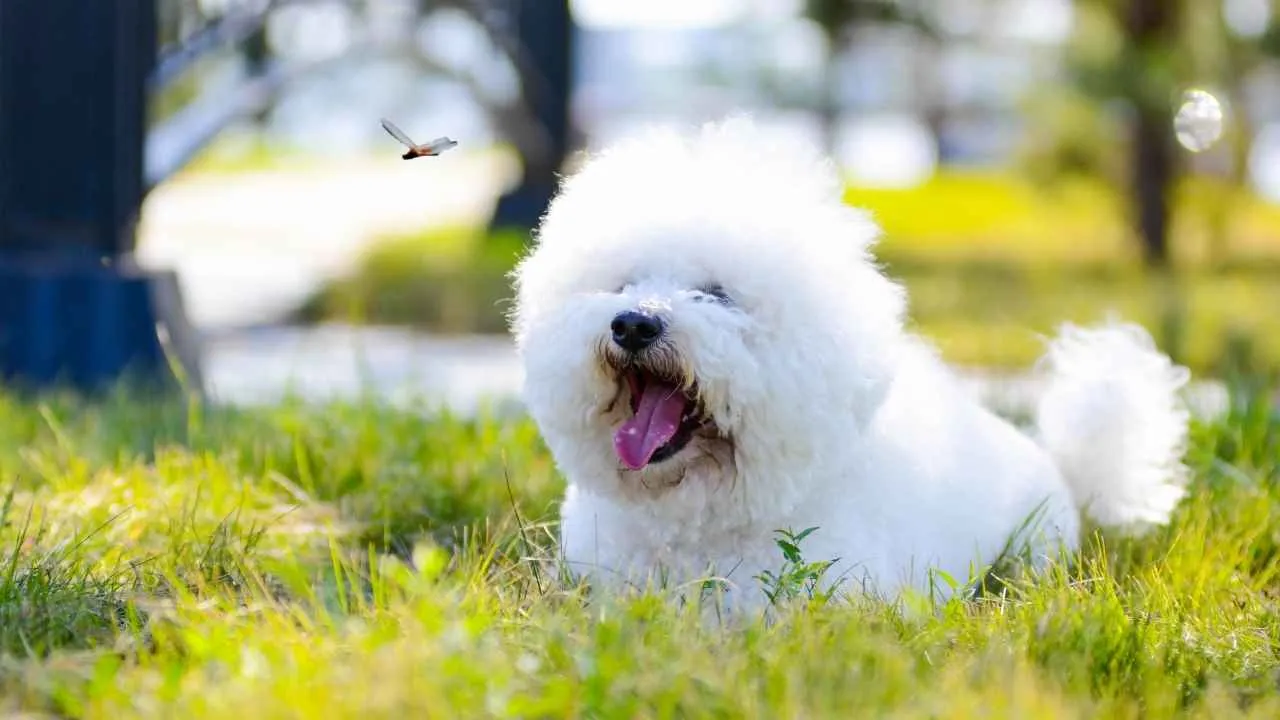
Once the darling of European aristocrats, the Bichon Frise still carries a certain air of royalty, minus the drama.
Bichon Frises are a small breed, generally weighing between 10 and 18 pounds and standing around 9.5 to 11.5 inches tall at the shoulder. With their fluffy appearance and cheerful nature, they’re well-suited for apartment living—or even a castle, if one’s available.
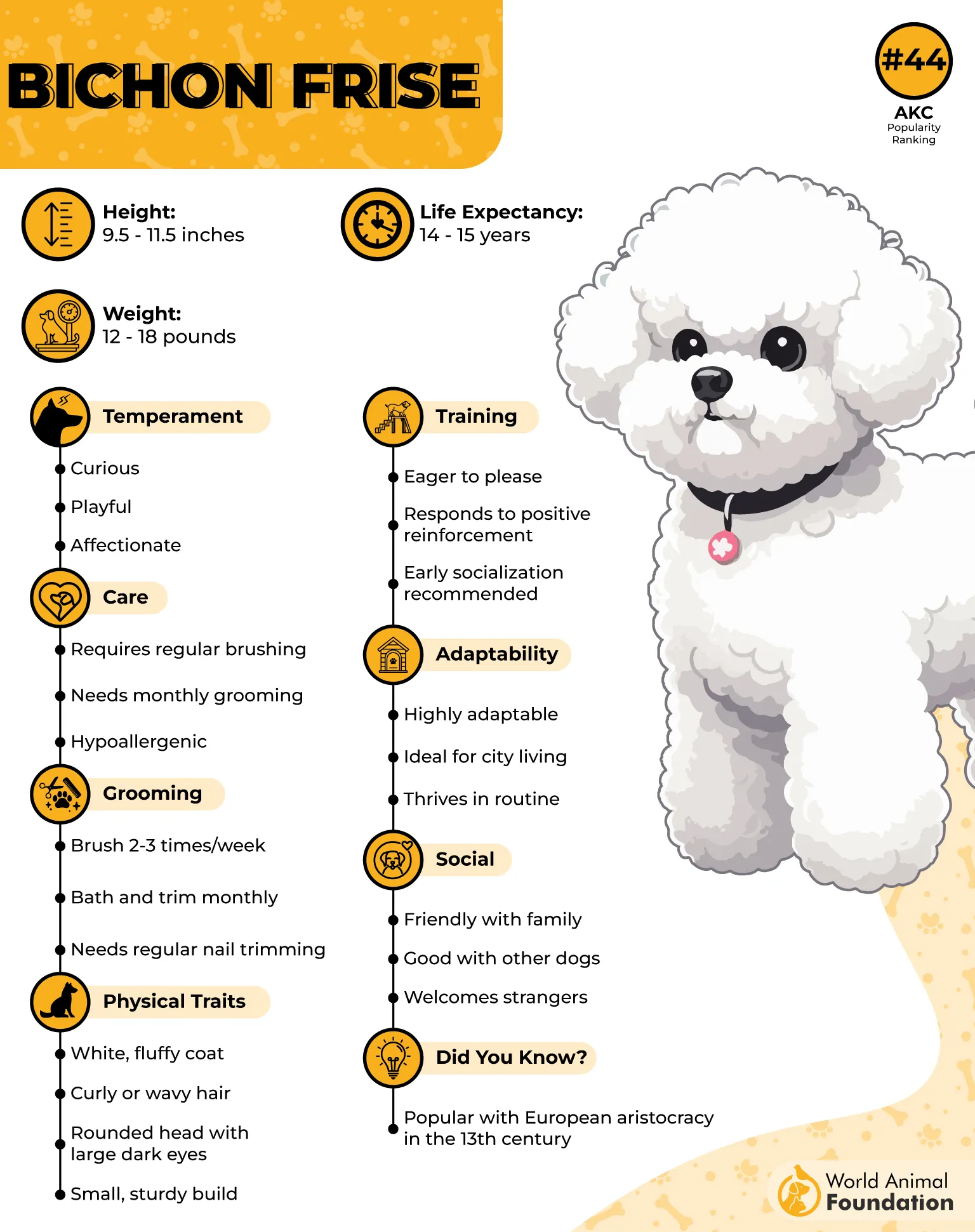
While adult Bichons are best known for their fluffy, all-white coats, puppies may display hints of other colors like grey, buff, or apricot before their fur matures. Bichon Frises have a curly coat that sheds very little, making them a suitable option for some people with allergies.
Bichon Frises can make great emotional support animals (ESAs). Their playful and affectionate nature, combined with a strong desire to be close to their owners, makes them well-suited for providing emotional comfort.
Personality Snapshot:
Happy-go-lucky – Sunshine in dog form.
Loves close company – “Alone” isn’t in their vocabulary.
Playful & perky – Always up for a mini adventure (indoors counts).
Apartment-friendly – Thrives in cozy spaces.
Great emotional radar – Instinctively knows when you need a cuddle
They only need about 30 minutes of daily exercise, making them ideal for low-energy households. But beware: they bond hard, so being left alone too long might spark a full-blown canine meltdown (complete with soulful eyes and dramatic sighs).
Petplan notes that they can be prone to separation anxiety and may struggle when left alone for extended periods. They thrive best in homes where someone is around most of the day to provide companionship and attention.
5. Maltese
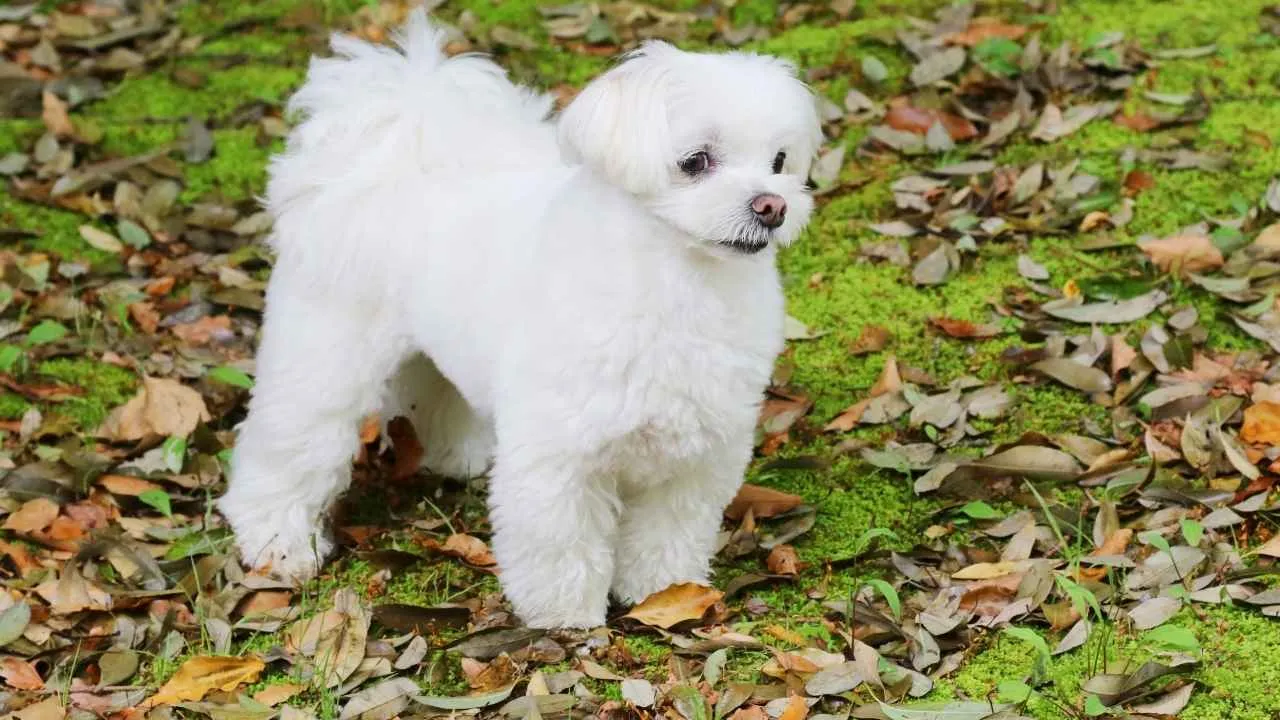
The Maltese is proof that good things do come in small, silky-haired packages. Friendly, alert, and endlessly loyal, these toy-sized charmers adore human company—and frankly, expect to be treated like royalty (with cuddles and snacks, please).
Maltese dogs are petite, usually weighing between 4 and 7 pounds and standing around 7 to 9 inches tall at the shoulder. Their small size and sweet temperament make them perfect for apartment life and snuggling on your lap.
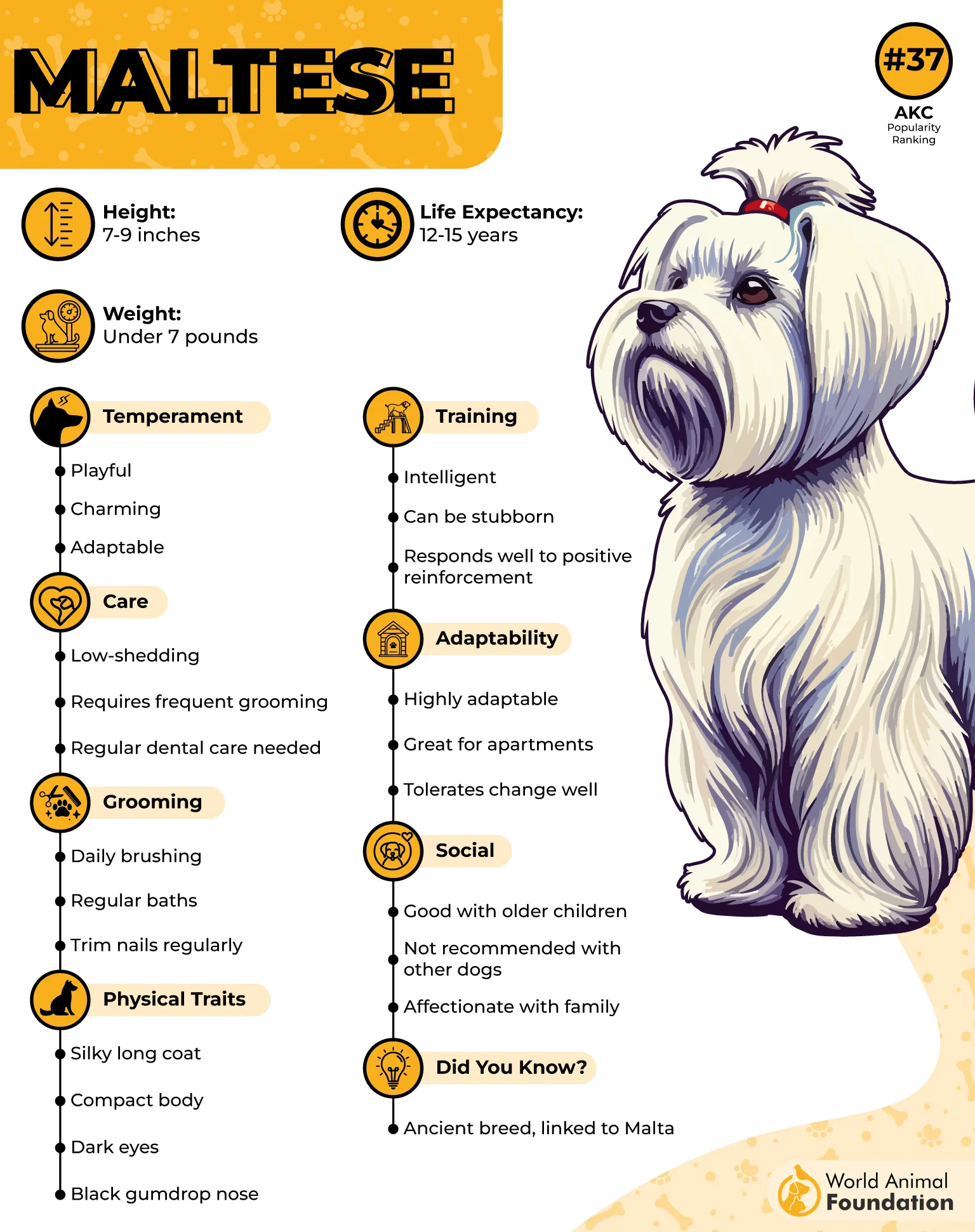
They’re natural therapy dogs who take their emotional support dog role very seriously. Maltese dogs are known for forming strong bonds with their family and love staying close to their humans. Because of this close attachment, they can develop separation anxiety if left alone for extended periods.
Personality Snapshot:
Gentle and loving – All heart, zero attitude.
Adaptable to any space – Flat, house, or cloud of pillows.
Human-obsessed – Wants to be where you are—always.
Cheerful & confident – Small but mighty in spirit.
Natural therapy dog – Instant mood booster on four legs.
They’re super adaptable and need only about 30 minutes of daily activity, whether that’s a short walk or a play session in your lap.
According to Wikipedia, the Maltese breed is often recommended for individuals with dog allergies, as it is considered hypoallergenic. They shed very little, which may make it easier for some allergy sufferers to tolerate living with them.
6. Great Pyrenees
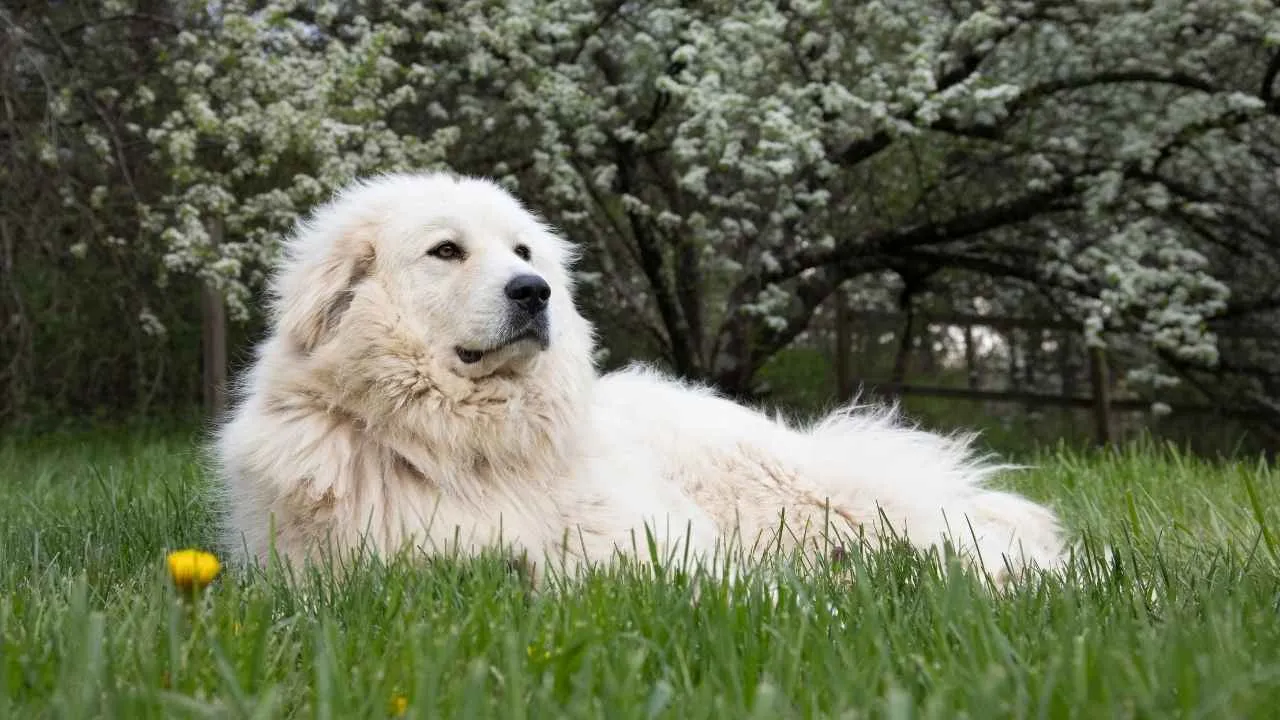
Don’t let their giant, majestic appearance fool you—Great Pyrenees are oversized marshmallows. These gentle giants were bred to guard flocks, but they do it with a calm, almost zen-like vibe.
Great Pyrenees dogs stand between 25 and 32 inches tall at the shoulder. Females typically weigh around 85 pounds, while males often exceed 100 pounds. Despite their size, these fluffy dogs can be wonderful family pets.
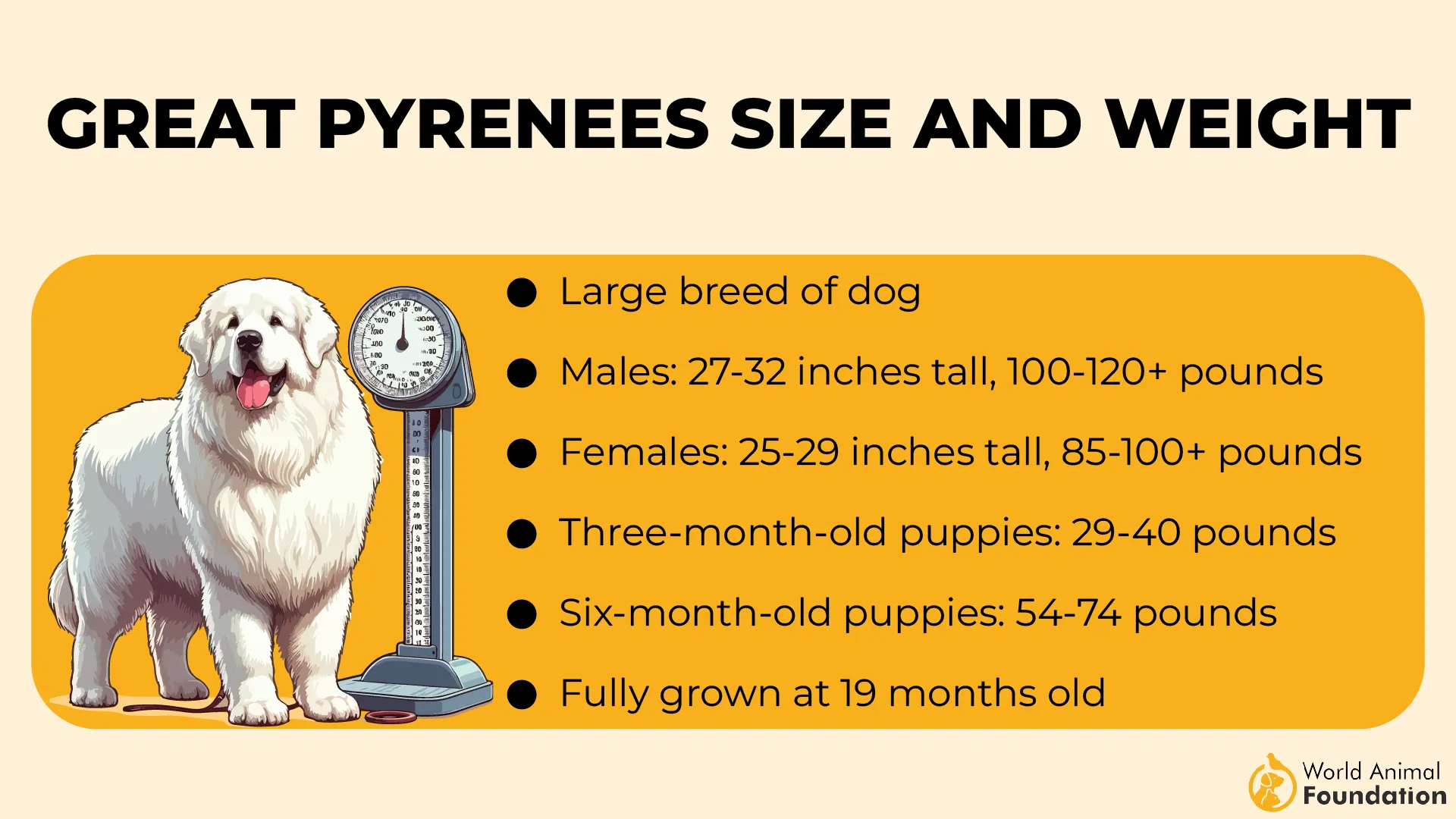
They’re famously mellow and low-key, making them ideal emotional support dogs for those who prefer quiet companionship over constant activity. They’re not into fetch marathons or agility courses. A slow walk and a cozy corner to nap in? Now that’s more their speed.
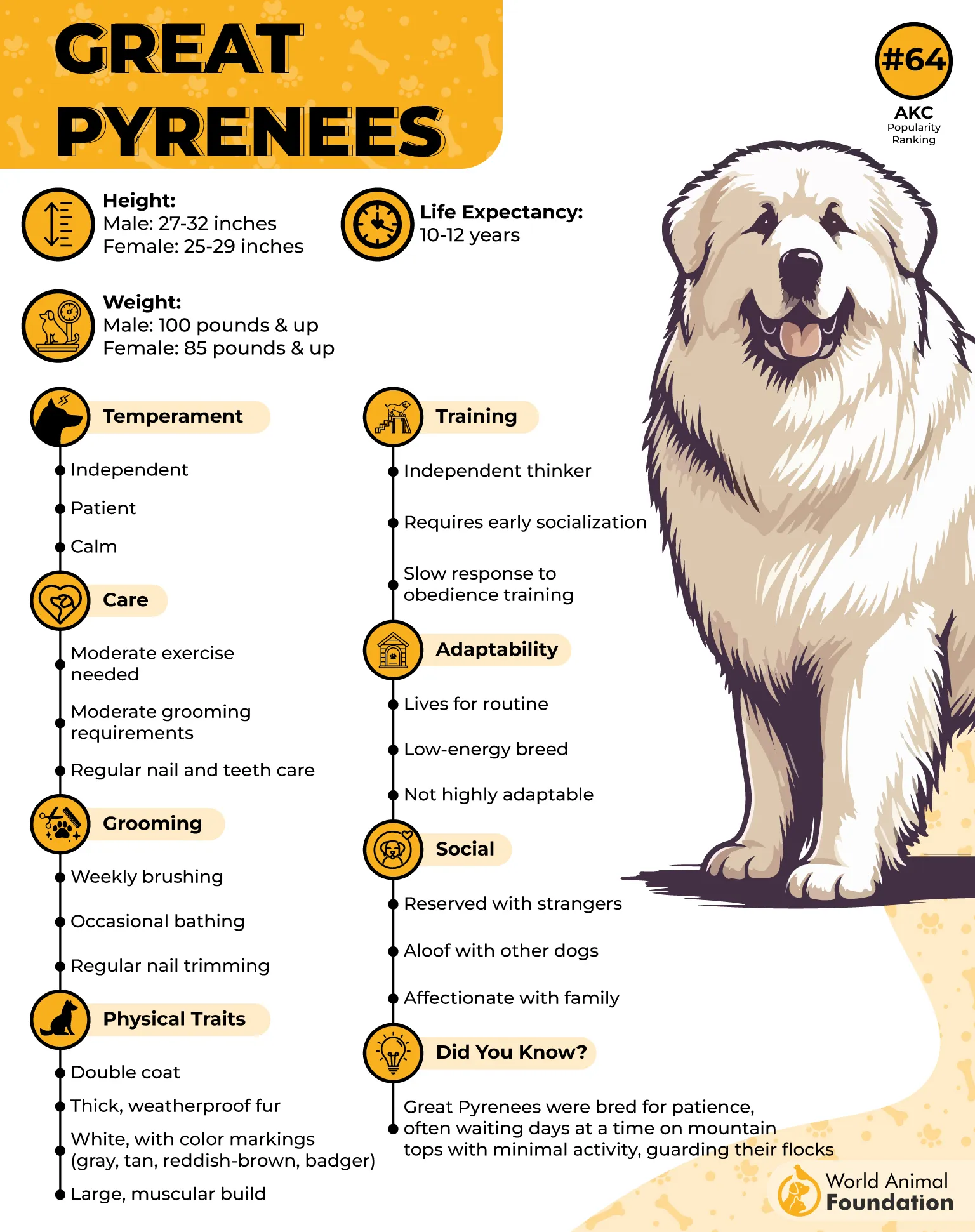
Hill’s Pet notes that the Great Pyrenees was bred to guard sheep alone in mountain valleys, making them naturally quite independent. This independence can make obedience training more challenging compared to other breeds.
Personality Snapshot:
Exceptionally calm – The definition of peaceful presence.
Loyal protector – Gentle, but will always have your back.
Low energy – Lazy strolls > high-speed chases.
Independent but loving – Cool, but still deeply bonded.
Couch-sized cuddle buddy – May snore like a bear, but loves like a lamb.
Although they have a thick, abundant coat, Great Pyrenees don’t require excessive grooming because their long outer fur is naturally resistant to dirt and tangles.
Great Pyrenees aren’t highly driven to chase, but they’re known for barking to alert their family, even if it’s just to announce the mail carrier’s arrival.
7. Havanese

The Havanese is like that cheerful friend who always shows up with snacks and good vibes. Originally from Cuba, these silky-haired sweethearts were bred for companionship, and they’ve mastered the art of being the life of your living room.
Standing just under one foot tall, a full-grown Havanese weighs between 7 and 13 pounds. They are also called the Havana Silk Dog or Spanish Silk Poodle. The Havanese form strong bonds with their owners and dislike being left alone, often following their humans closely like a shadow.
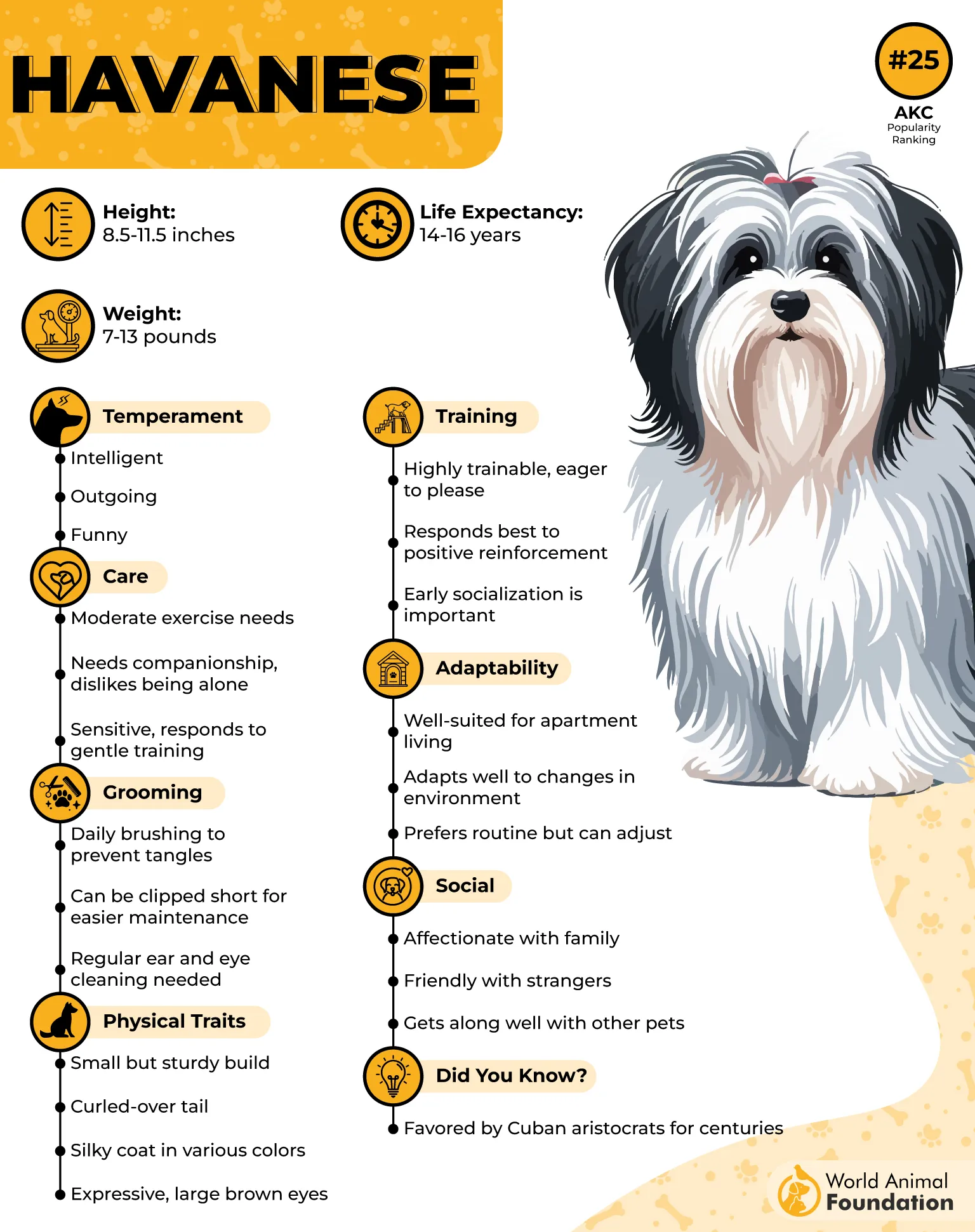
Havanese are highly intelligent, making them relatively easy to train. They respond best to training that uses games and positive reinforcement, keeping the process fun and engaging.
Personality Snapshot:
Cheerful & social – Always ready to brighten your day.
Compact and cozy – Fits in your home and your heart.
Low exercise needs – Happy with a stroll and a squeaky toy.
Velcro dog energy – Loves being your little shadow.
Silly & affectionate – Equal parts jester and snuggler.
They’re small, adaptable, and thrive in apartments. With about 30 minutes of exercise per day, they’re content with a short walk and some toy time. Just don’t leave them alone too long—they’re clingy in the cutest way.
They can develop separation anxiety and may struggle with being left in a crate for long periods. However, if trained to avoid excessive barking, they adapt well to apartment living.
Conclusion
When choosing an emotional support dog, especially for individuals with mental health conditions or a mental disability, it’s important to consider the dog’s energy level, temperament, and suitability for small spaces. While service dogs require special training, emotional support animals simply need to provide emotional support and comfort under the guidance of a licensed mental health professional. Many low-exercise breeds make the best emotional support dogs. Breeds like the French Bulldog, Basset Hound, Yorkshire Terrier, and Cocker Spaniel are known for their sensitive nature and lower need for physical stimulation, making them perfect for those who may not be able to handle high-energy breeds.
These dogs are often highly trainable, offer therapeutic benefits, and help reduce anxiety and stress, especially for those with social anxiety. Even rescue dogs and other animals from local shelters can become emotional support dogs with proper training and care. While herding dogs like Border Collies and Labrador Retrievers are highly intelligent and can be trained as support animals, they often require more physical and mental stimulation. Choosing the right breed from different breeds of best emotional support dogs ensures lasting comfort and companionship. Whether it’s about having a buddy to spend time with or to ease anxiety, these best dogs can truly bring joy to everyday life.


